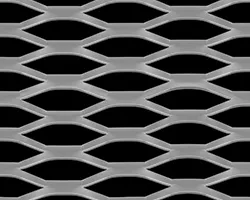Understanding the Cost of Cattle Panel Fences
When it comes to livestock farming, ensuring the safety and management of cattle is a top priority. One effective solution for this is using cattle panel fences. These fences not only provide a secure boundary for livestock but also offer ease of maintenance and flexibility in design. However, the cost associated with cattle panel fencing can vary greatly based on several factors. In this article, we will explore those factors and provide an overview to help you make an informed decision regarding your fencing needs.
What are Cattle Panel Fences?
Cattle panel fences are typically made from welded steel rods arranged in a grid pattern. They can be used to create enclosures for cattle, horses, and other livestock. Their robust construction makes them resistant to weather elements, pests, and the strength of the animals they contain. The panels are normally 16 to 20 feet in length and 50 to 60 inches in height, allowing for a sturdy barrier that prevents cattle from escaping and ensures predators can't breach the enclosure.
Factors Influencing the Cost
1. Material Quality The cost of cattle panel fencing is heavily influenced by the quality of materials used. High-quality steel panels that are galvanized or coated to prevent rust will typically be more expensive, but they also provide better longevity. Inferior quality materials might come at a lower initial price but could result in higher replacement costs in the long run.
2. Panel Length and Height The dimensions of the panels also play a critical role in pricing. Standard lengths and heights may be more affordable due to mass production, whereas custom sizes may result in a higher price per panel. Depending on the type of livestock being contained, taller panels may be required, which can further increase costs.
3. Installation Costs Installing cattle panels can incur additional expenses. While some livestock owners may choose to install the panels themselves to save money, hiring professionals can ensure a more secure and aesthetically pleasing installation. The cost of labor can vary significantly based on location and the complexity of the fencing design.
cattle panel fence cost
4. Length of the Fence The total perimeter that requires fencing will have a direct impact on costs. Larger enclosures will naturally demand more panels, as well as more posts and gates to create secure entry and exit points. It is essential for farmers to measure their property accurately and consider any specific design requirements.
5. Additional Accessories Costs may also add up with the purchase of additional accessories such as corner posts, gate installations, and hardware for securing the panels. The type of accessories you choose—whether simple or more elaborate options—can significantly influence the overall budget.
6. Local Pricing Differences Prices can vary depending on geographical location due to shipping costs, the availability of materials, and local market competition. Urban areas may see higher prices compared to rural locations where farming supplies are more abundant.
Average Cost Estimates
On average, cattle panel fencing typically costs between $20 to $40 per panel, with the total cost of fencing often ranging between $2 to $5 per linear foot when factoring in posts, gates, and installation. For instance, enclosing a one-acre area may cost anywhere from $3,000 to $10,000, depending on the factors previously discussed.
Conclusion
Investing in a cattle panel fence can be one of the most prudent decisions for a livestock owner. Although the initial cost may seem substantial, the long-term benefits of durability, easy maintenance, and peace of mind regarding the safety of your animals are invaluable. To make the best decision, it’s vital to consider your specific needs, compare prices from different suppliers, and weigh the importance of quality versus affordability. By doing so, you can select a fencing solution that not only meets your budgetary constraints but also enhances the overall management of your cattle. As with any investment, thorough research and planning will lead to the best outcomes in the long run.























